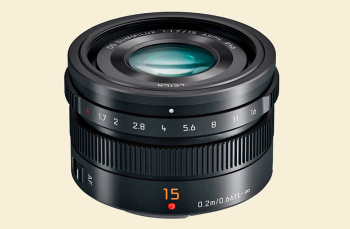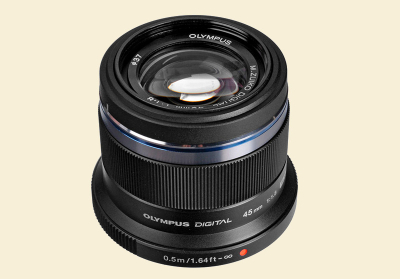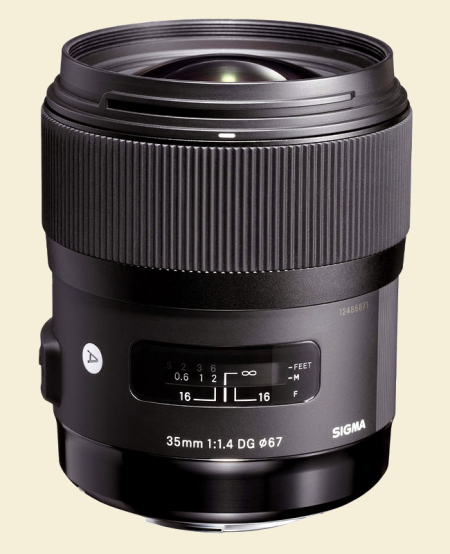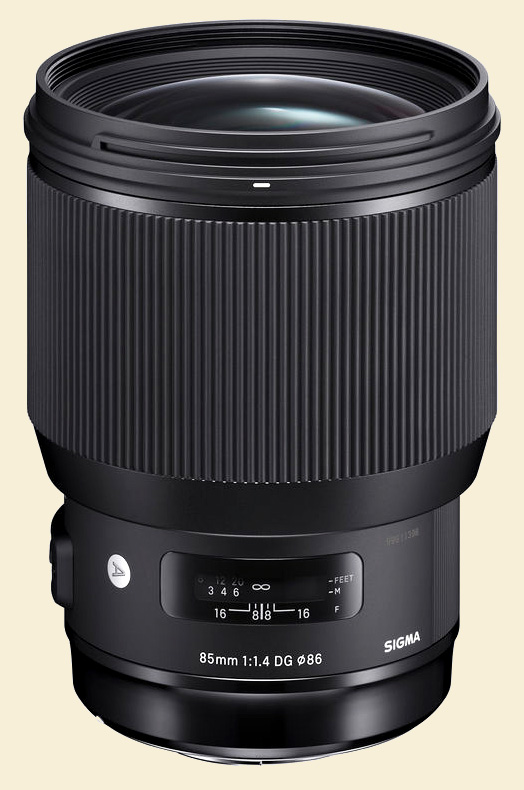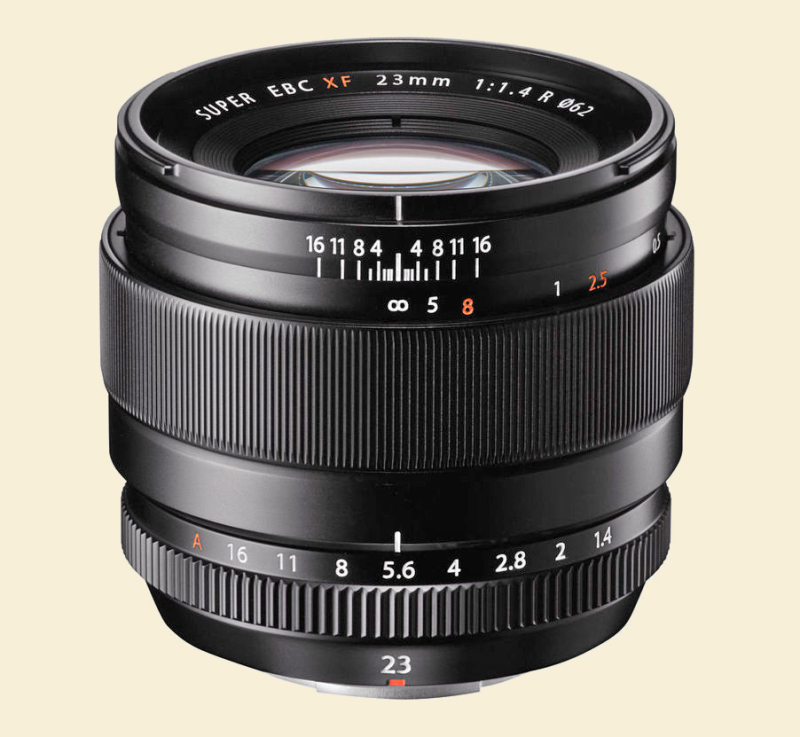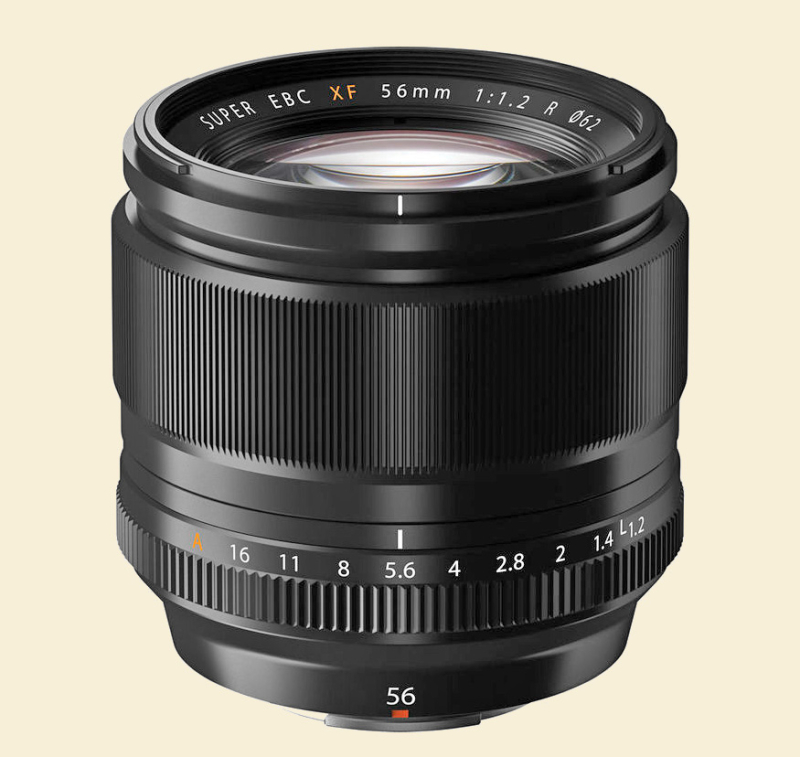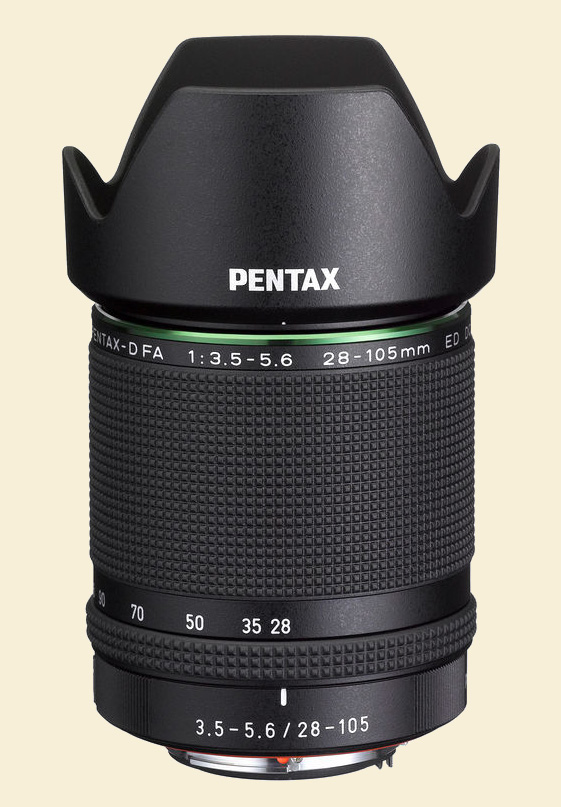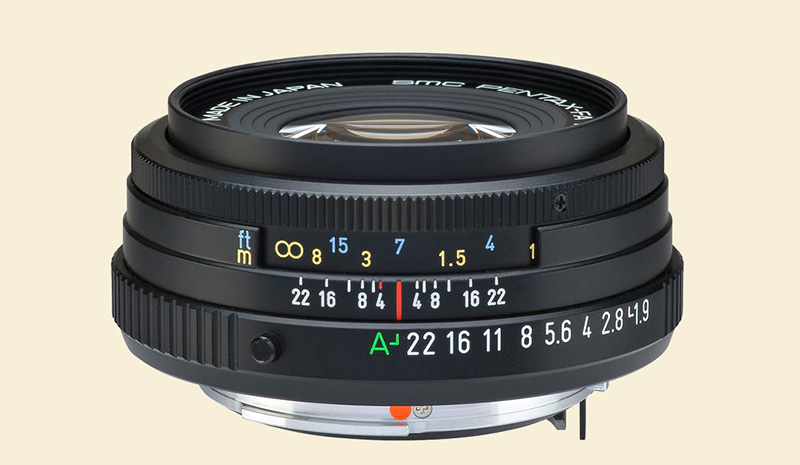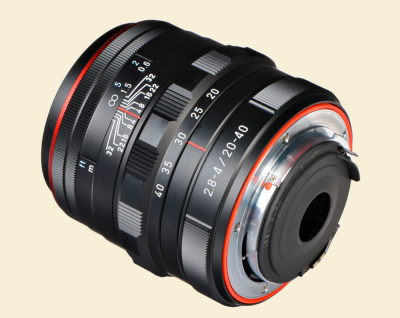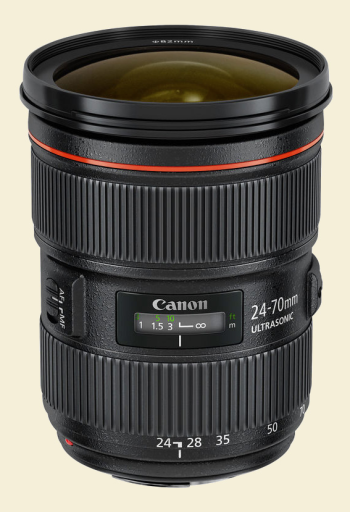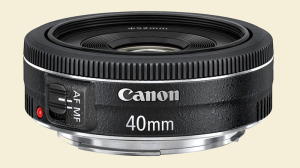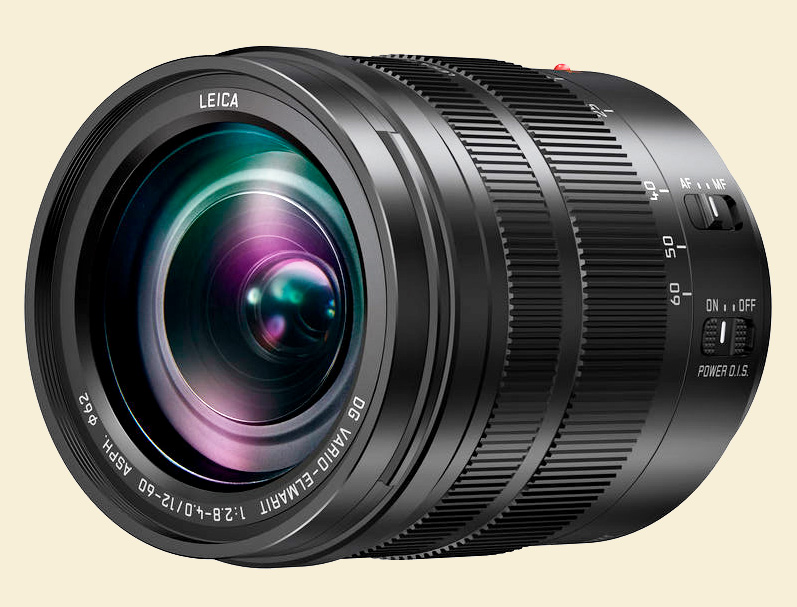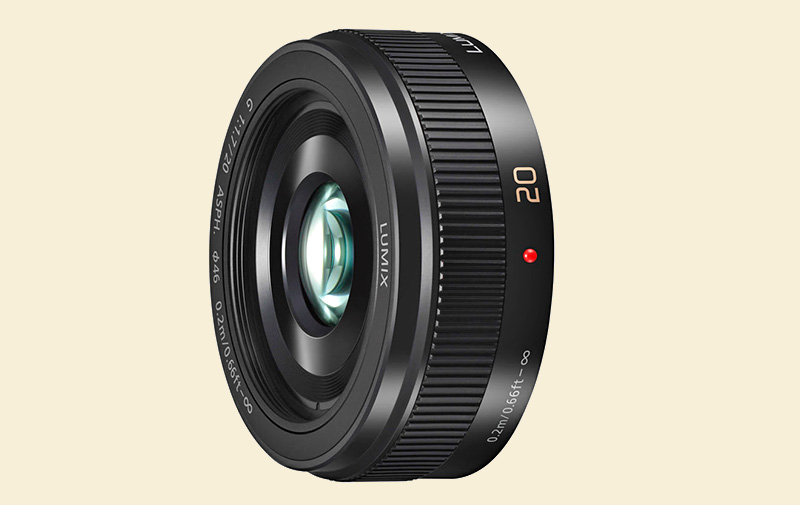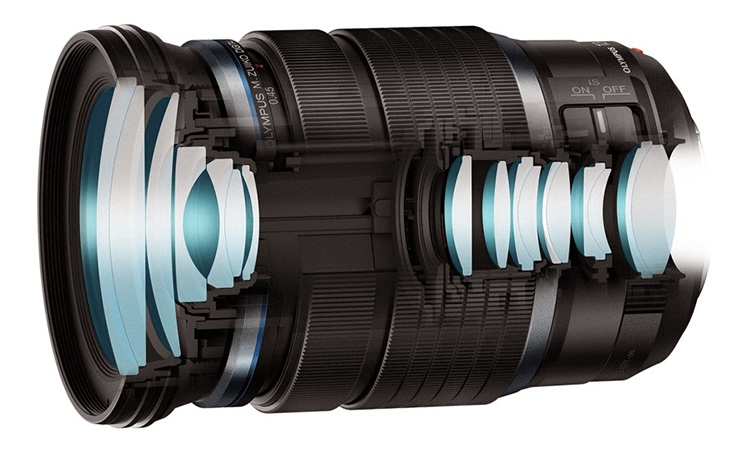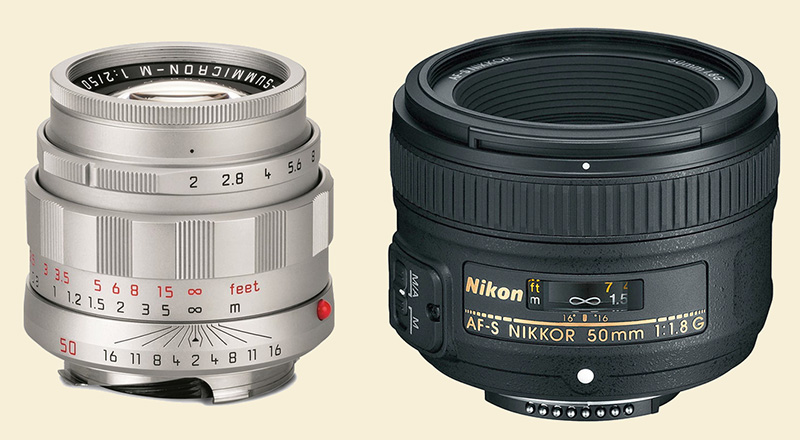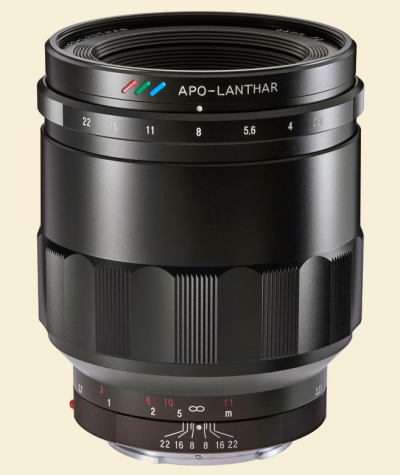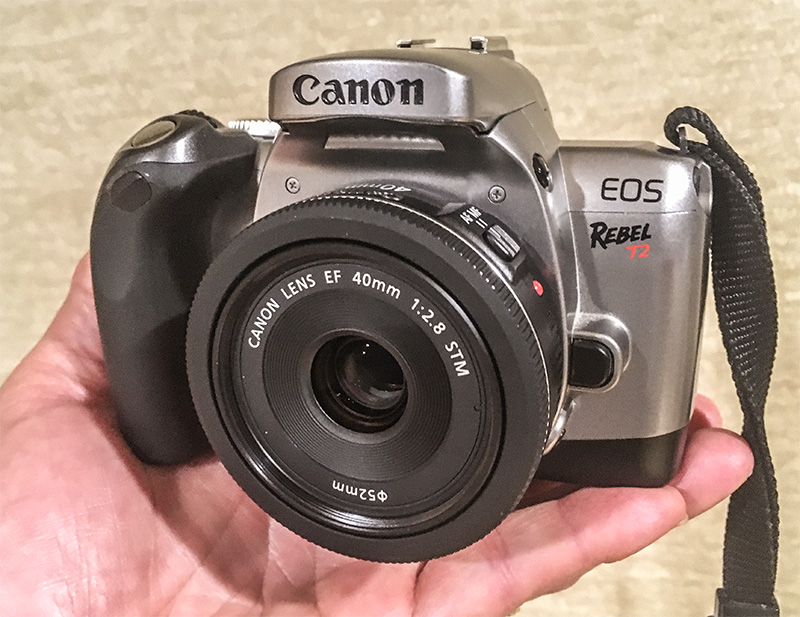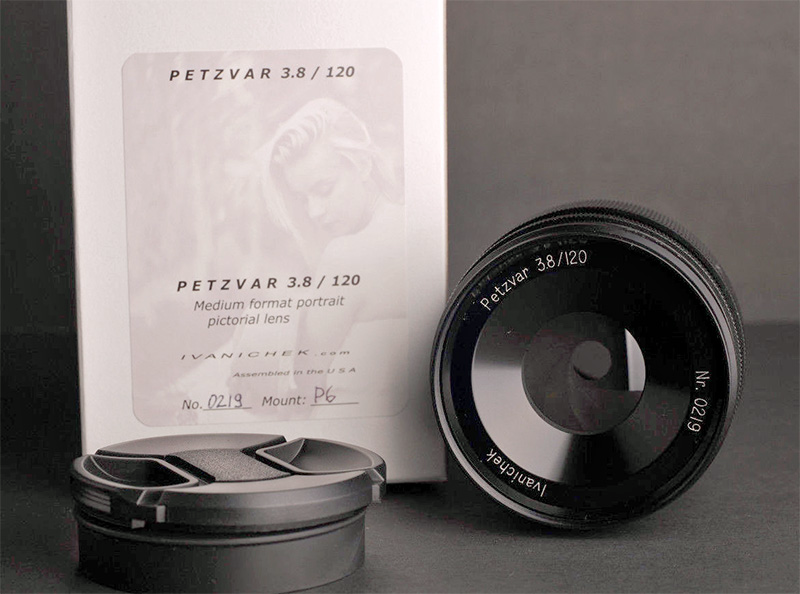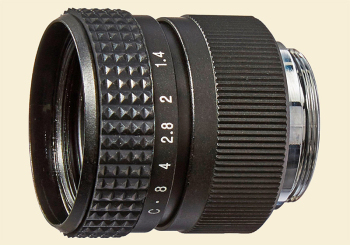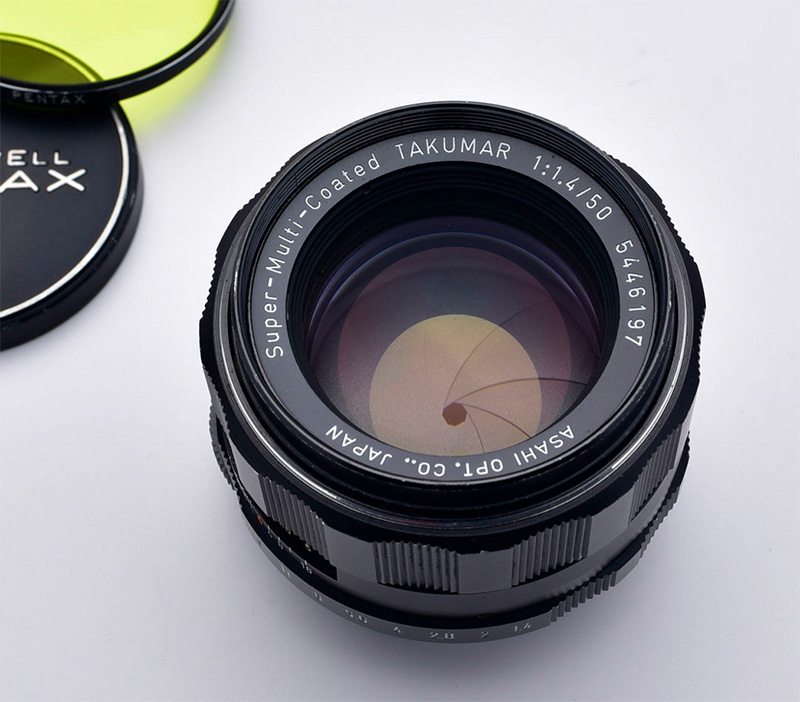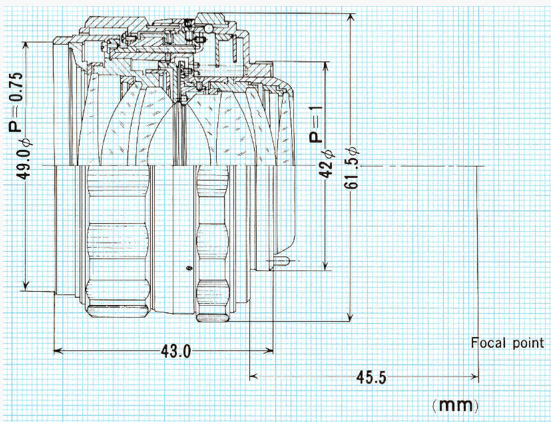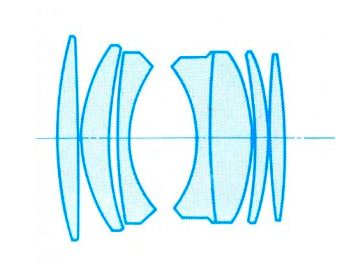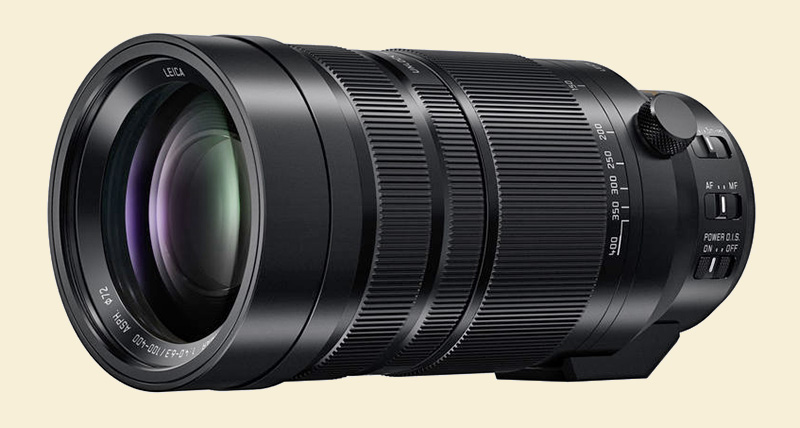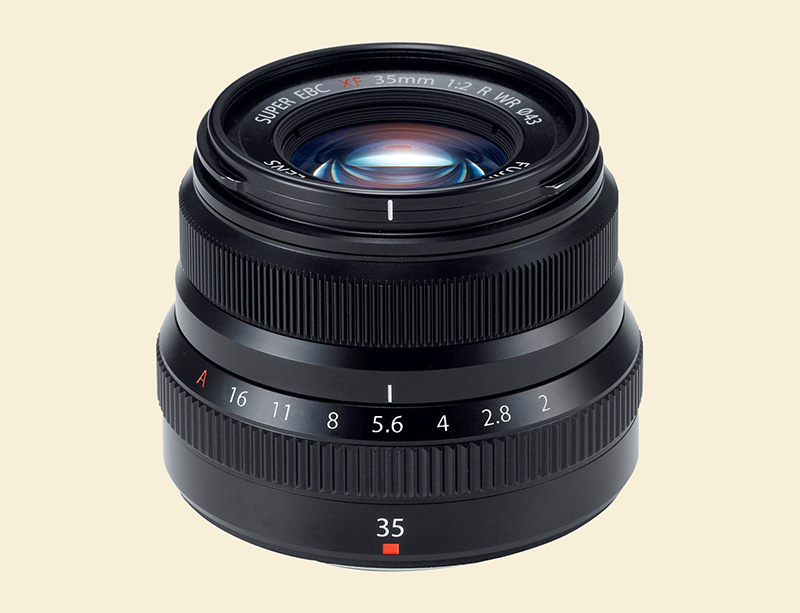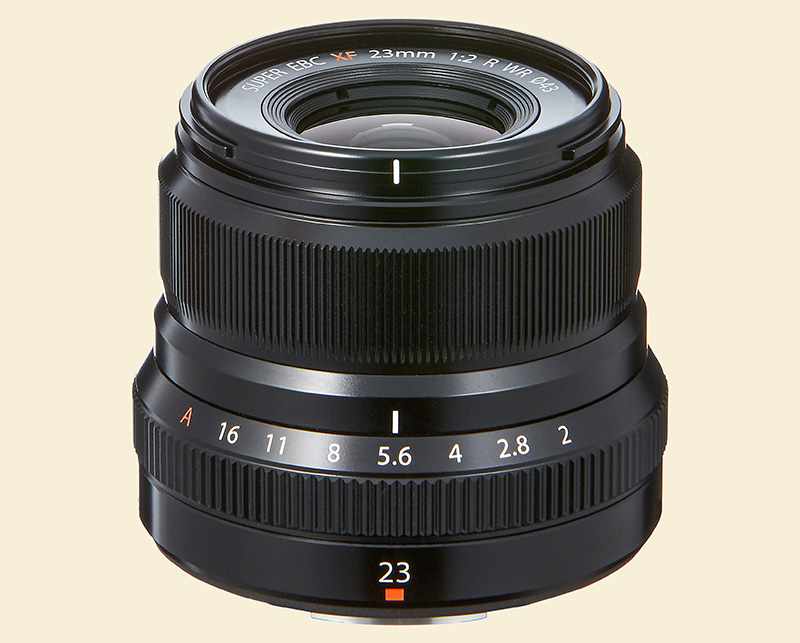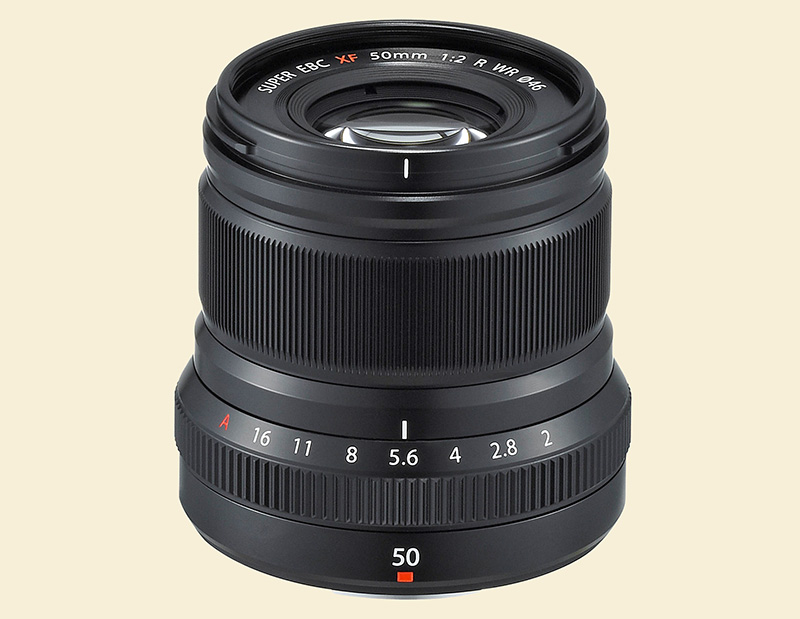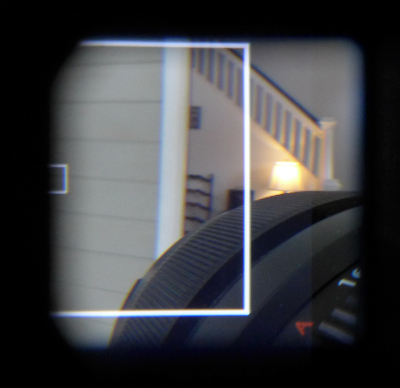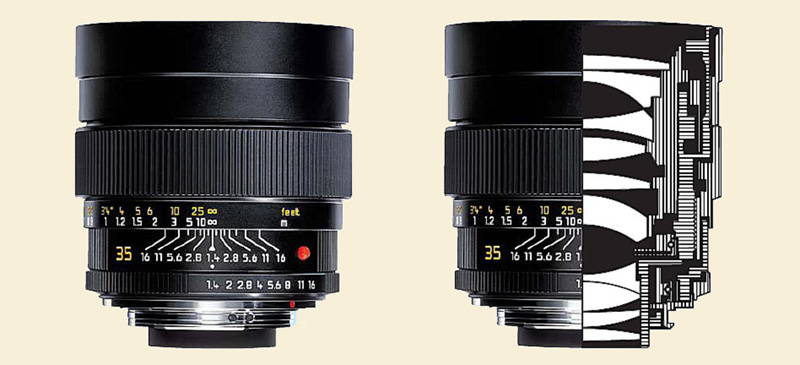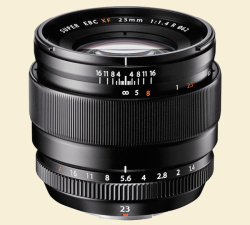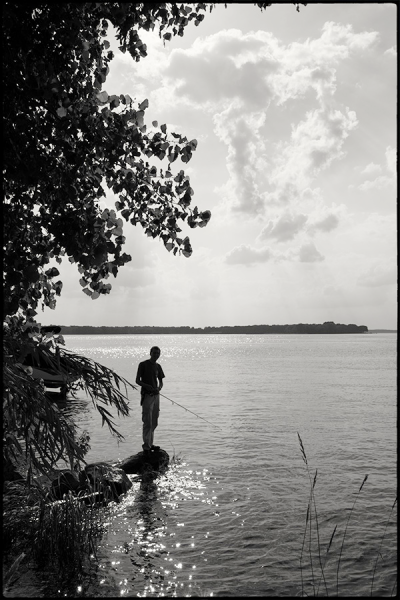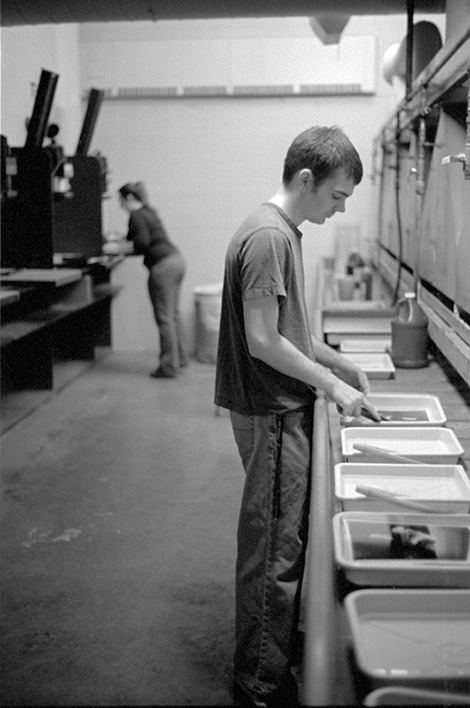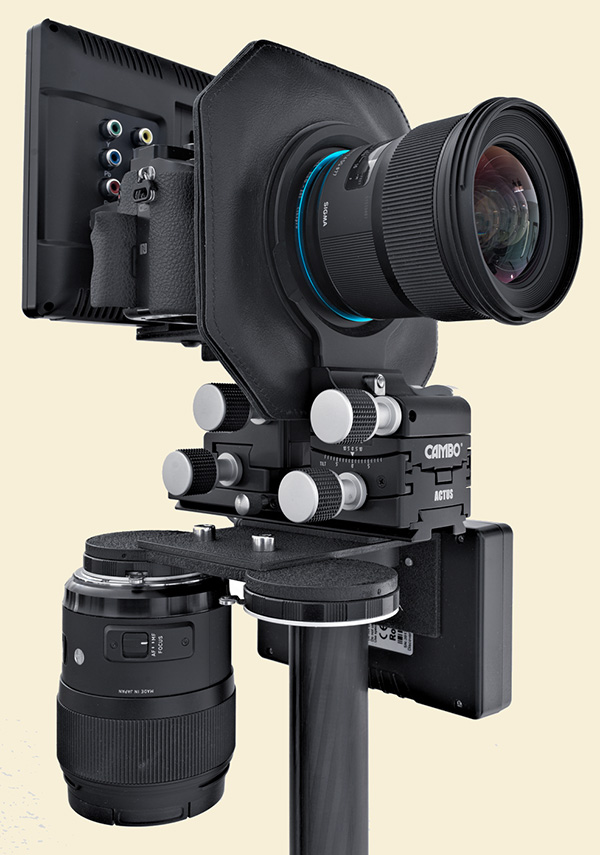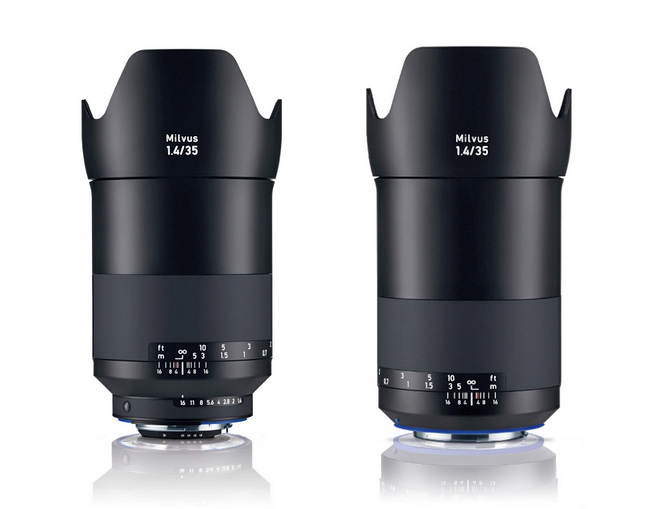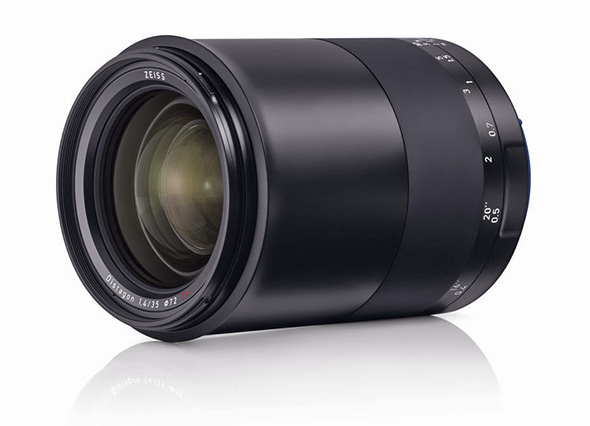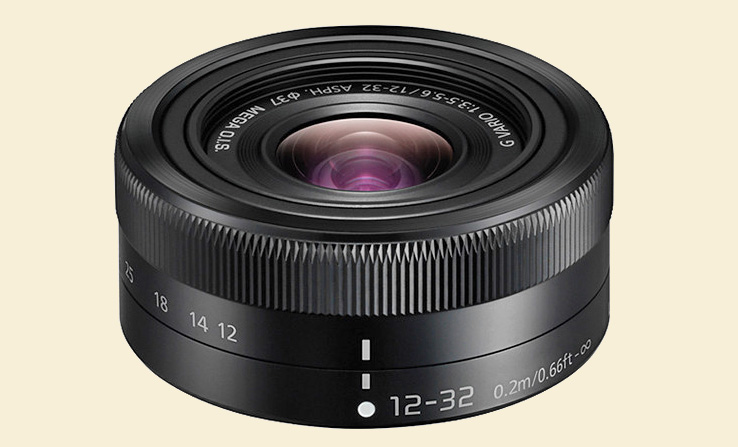
Every now and then I get intrigued by some lens or other. Almost always one I don't own. "Obsessed" would be the common parlance, but that's expressive hyperbole, like people who say they're "starving" when they haven't eaten for five hours.
I used to think these lens fixations of mine had some significance or import. Now I realize it's just a thing I do.
It's been this one lately, since Ken Tanaka mentioned it the other day. It appears to defy physics in several ways, and it's always interesting when something does that. It's tiny, no bigger than a pancake lens, yet it's a zoom; super-light, bordering on having negative weight, like helium; yet apparently shows little distortion at the wide end (when corrected), good corner sharpness, and characterful high contrast.
Do you know it? Happen to have one?—If you do know it, what do you think?
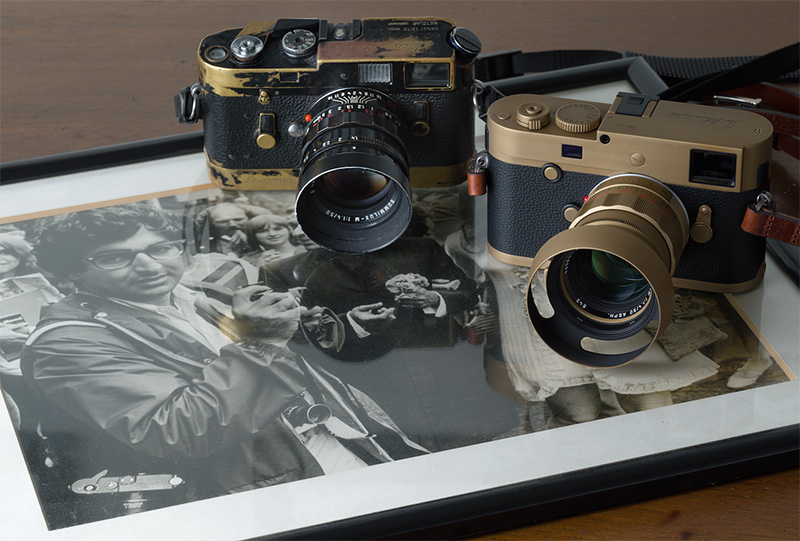
Jim (now where is that polarizer?), Jim's former Leica, and the new Jim Marshall commemorative
To the rescue
Leica has solved a problem. Addressing the needs of its customers who fret and kvetch because they just can't seem to spend enough on one camera no matter how hard they try, it has issued a "limited edition Leica M Monochrom set in homage to Jim Marshall"—Jim being the famous rock 'n' roll photographer whose own old Leica he used as a hammer, a weapon, a press credential, and, yes, a camera until it was battered and brassed. If you're sighing with relief because spending more money was just what you needed, you'll be interested to know that the set includes "the new brass plated Leica M Monochrom with a special 'Laiton' finish and an inscription of Jim Marshall’s autograph, as well as a Summilux-M 50mm ƒ/1.4 ASPH. lens, a Jim Marshall Limited Edition Estate print of 'Thelonious Monk at the Monterey Jazz Festival 1964' and a special, numbered edition and estate embossed copy of the book Jim Marshall: Jazz Festival" (available separately). Can't beat it with a stick.
Don't excoriate me for my tone here. I've always been sardonic about Franklin Mint Leica commemoratives, which march on despite highs, lows, and changes of corporate ownership.
But...well, there's something fishy about this one. Is this the first time a Leica commemorative has honored someone who's...well, dead? I think for example of the recent Ralph Gibson special edition. Ralph is old, not dead, and there is a very big difference between those two things (gets bigger every year, for me). Ralph had a hand in designing his camera and even uses one, I think. Don't you have to be alive, sentient, conscious, and sane to, well, be honored by an honor? Not for nothing is one of the qualifying requirements for Nobel prizes being alive.
My favorite Leica Franklin Mint commemorative was the His Majesty King Bhumibol Adulyadej gold M6 with matching gold-plated Summicron-M 50mm ƒ/2, issued on the 50th anniversary of the King's coronation, probably because "Bhumibol" sounds like a Monty Python name (no disrespect), the camera was delightfully gaudy, and King Bhumibol himself seemed like a pretty nice guy—and he was a photography enthusiast, bonafide. If he'd lived for fifty years in Massachusetts where he was born, he mighta been a TOP reader.
...But he was alive when his commemorative came out, is what I was saying. I don't know, I'm not an expert in these things. Also, there were 700 King Bhumibol commemoratives, so everyone could have one. There are only 50 Jim Marshalls. Even though there are lots more billionaires now than there were in 1996 when the King Bhumibol came out.
The cost of the new Jim Marshall M-Monochrom will be $If-you-have-to-ask (or £If-you-have-to-ask for those of you in the UK).
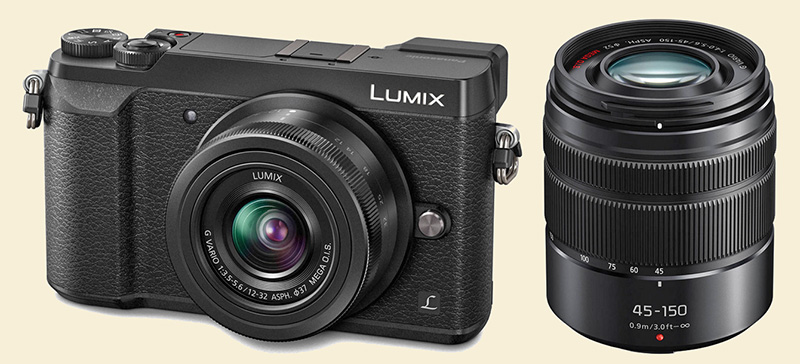
Meanwhile, back among the peasantry
For those of you not avid to spend more money, the wee little Micro 4/3 12–32mm zoom costs $298—originally it was just available in a kit with the tiny GM1 (no longer available), but there was so much interest that Panasonic made it available separately. It's gotten to be kind of a cult lens among Micro 4/3 aficionados.
But here's an interesting thing. The companion longer lens is the 45–150mm (90–300mm-equivalent), and that costs $247.99; but at the moment you can get both lenses, plus the GX85 camera that Gordon so kindly profiled for us recently, for only $697.99. Since the GX85 alone costs $597.99, that's either like getting both lenses for $100, or, turned around, like buying two inexpensive lenses and getting a brand new GX85 for, um, fifty-two dollars.
B&H closes in the few more hours, at 2:00 p.m. Eastern time. I don't know how long this deal will linger after that.
In any event, that's the kind of thing that solves the type of problems I more often have.
Mike
Original contents copyright 2017 by Michael C. Johnston and/or the bylined author. All Rights Reserved. Links in this post may be to our affiliates; sales through affiliate links may benefit this site.
TOP/Yale Spring Photo Book Offer
(Ends June 30th or when supplies run out)
(To see all the comments, click on the "Comments" link below.)
Featured Comments from:
Lee Reamsnyder: "I had the 12–32mm with a Panasonic GM5. During a trip to Iceland, I handed that combo to my wife while I juggled a variety of 'more serious' cameras. You can already guess that with that little marvel she took most of our favorites from that trip."
Eli Burakian: "I have the 12–32 and it's awesome. I think the companion lens though, is not the 45–150mm, but is the 35–100mm ƒ/4–5.6 O.I.S. which is on sale at B&H for under $250. It's also incredibly tiny and has superb optics. Both these lenses, along with the tiny GM5 make for a versatile and high-quality setup."
Rick D (partial comment): "I acquired the 12–32mm with my GM5 and despite my low expectations am pleased with its performance:heft ratio. It's a great spokeslens for the Micro 4/3 system, demonstrating what's possible at the small end of the range. Not only does it go as wide as 12mm (as opposed to more typical 14mm kit zoom), they somehow managed to cram O.I.S. in there, important on the non-stabilized GMs. Reasonably sharp and contrasty with controlled distortion are all honest claims."
NikoJorj (partial comment): "I have the 12–32mm, and I love it because it is so inconspicuous: light enough to carry it in the mountains, wide enough to frame many things where, no, you can't take so many steps back, and its IQ is...well, it might have been lauded as a miracle a few decades ago; now it just does the job."
Dil (partial comment): "I have the Olympus 14–42 and that lens was really underwhelming. I now have three (yes three) 12–32mm lenses and have used them on most Panasonic cameras. I can only say it really is a truly super lens."
Trevor Johnson: "The Jim Marshall edition is only available for sale in the US, at $12,950. A new UK-sourced M Monochrom 246 body and 50mm Summilux is £20 short of £8,000, so maybe it isn't such bad value for money. If you have the money and want to spend it thus."
Larry Wilkins: "I've had the 12–32mm for about a year. The size is great and I consider it a good travel lens, but the image quality seems underwhelming to me. I much prefer using the 20mm."
Mike replies: Roger Cicala's commentaries about zooms and QC go double for cost-optimized (cheap) lenses and lenses optimized for small size. You might try a second sample just to see if your own is actually giving you what it's capable of.
Henk: "I have the 12–32mm on my GM5 and shoot also a variety of other Panny and Oly cameras and lenses. It still surprises me when I look at a great image in my favourite raw conversion program (Capture 1) and the EXIF says it was shot with the GM5/12–32mm combo. For travel photography it can compete with its bigger brothers like GX8/12–35mm or E-M5/12mm."
Dave Jenkins (partial comment): "I have a 12–32mm, purchased last year when Amazon was selling them for $179.95. It's very small and light, as you say, and quite sharp. But don't believe that bit about 'little distortion at the wide end.' It does distort, a lot! It's fixable in Capture One, but since I have an older version it doesn't do it automatically. I suppose it's fixed automatically in-camera if you have a recent camera."
Mike replies: People are of two minds about software-corrected distortion. Some feel it diminishes microdetail at the corners, but to me it's just another correction available to lens designers and there's nothing inherently bad about it if it's deliberate and planned by the designers from the start. As always, the acid test is in the implementation.
Moose: "The 12–32mm is a sweet little lens. One might even think I'm obsessed with it, as I have three of them. Not really so; it's my mild GM-series obsession....
"Unlike those who are happy with a fixed lens compact, I want a choice of focal lengths, via zoom(s) or primes. The GM1 was a flat-out wonder for compact, high IQ photography. Eventually, I got talked into trying the slightly larger GM5, and the EVF and control wheel won me over. Then the GM5 was discontinued, and apparently was to be the last GM, so I had to buy a back-up. All came with the 12–32mm kit lens.
"There are a couple of accessories that improve the 12–32mm, both from Olympus. The MCON-P02 is a compact, very well designed, achromatic close-up lens that adds high quality closer focus. The link doesn't show the slick front and rear covers. The LC-37C lens cap automatically opens and closes as the lens is extended.
"As with all Oly and Panny Micro 4/3 lenses, linear distortion is corrected in soft/firmware. The 12–32mm optically has quite a bit of barrel distortion, although less than the Oly 12-50. Both makers have opted for slightly less than full correction. If needed, the PTlens Plug-in or DxO Optics pro will do a more complete correction.
"The 45–150mm is not the companion to the 12–32mm. That's from Panasonic's regular line, and predates the GM1 and 12-32. The matching longer zoom is the diminutive 35–100mm ƒ/4–5.6. I originally bought a 45–150mm, but sold it after the smaller lens came out. I figured if I went that large, I could go just a little larger; might as well have the one lens solution, the 14–140mm. You can see a comparison of all these sizes. The 14–140mm has turned out to be my most-used lens on the GM5. Darned good for a consumer long zoom. The big weakness is close focus at the long end; also correctable with an achromatic closeup lens, but a different one.
"I used it quite a lot when I had an hour to spend on my own in the same little commercial district every week for a few months. I don't have to make any excuses for the results.
"The 12–32mm is also the perfect lens for Oly's odd, tiny Air-A01. Oly's own power zoom looks great on the Air, but neither body nor lens have IS. On such a tiny, light body, that spells trouble. The Panny 12–32mm, with auto lens cap, is perfect, with both O.I.S. and mechanical zoom, which I prefer."

